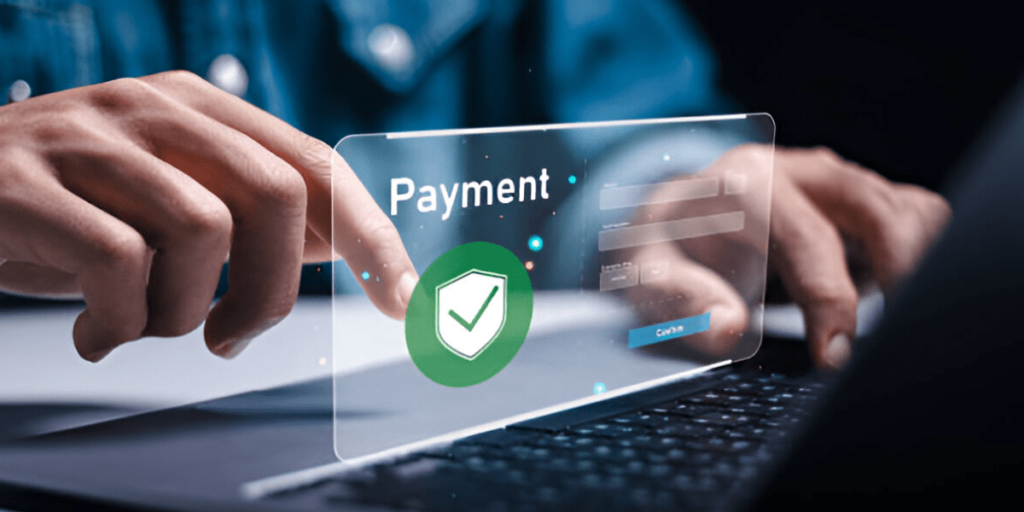Online Marketing B2B refers to the strategies and tools used by businesses to market their products or services to other businesses through digital channels. This is different from business-to-consumer (B2C) marketing, as B2B deals with rational, logic-driven decisions involving multiple stakeholders and longer sales cycles. The evolution of digital technology has drastically transformed how businesses connect, communicate, and convert. Today’s B2B buyers prefer to educate themselves before engaging with a sales representative. They rely on digital content, peer reviews, webinars, and search engines to guide their purchasing decisions. As such, Online Marketing B2B is essential to remain visible and relevant in the decision-making process. A cohesive digital strategy empowers businesses to build authority, establish trust, and support buyers throughout the funnel, ultimately improving the chances of closing high-value deals.
Importance of Digital Presence in B2B
In the age of information, a digital presence is more than just having a website; it’s about building a virtual identity that communicates value, credibility, and industry expertise. For B2B companies, the digital landscape offers unmatched opportunities to showcase offerings, engage in thought leadership, and connect with targeted audiences. Buyers now begin their journey with online research, often reviewing up to a dozen sources before making contact with a supplier. A poor or outdated online presence can erode trust instantly. Conversely, a well-structured website with detailed product pages, customer testimonials, certifications, and relevant content can significantly impact perceptions and lead quality. Online Marketing Strategy enables businesses to be available 24/7, reach global audiences, and demonstrate innovation and adaptability—all traits that influence buyer confidence. Additionally, being discoverable on industry directories, participating in forums, and maintaining active social profiles further bolster digital authority.
Content Marketing in B2B Strategy
Content marketing is at the core of effective Online Marketing B2B. Unlike direct sales tactics, content offers value to the target audience by addressing their pain points, offering insights, and guiding decisions. B2B content must be informative, data-driven, and tailored to different stages of the buyer’s journey. Thought leadership articles can attract top-of-funnel awareness, while technical whitepapers and case studies serve to educate mid-funnel prospects. Meanwhile, detailed product sheets, ROI calculators, and customer testimonials help convert late-stage buyers. The beauty of content is its versatility—blog posts, videos, newsletters, podcasts, and infographics can all convey expertise and foster trust. Consistency in tone, branding, and messaging is crucial across formats. Moreover, repurposing existing content for different channels can amplify reach without exhausting resources. High-performing content not only drives traffic but also generates backlinks, enhances SEO, and nurtures long-term customer relationships through ongoing value delivery.
Search Engine Optimization for B2B Companies
Search Engine Optimization (SEO) is a foundational component of Online Marketing B2B that ensures visibility where it matters most—search engines. When a potential buyer searches for solutions, vendors that appear on the first page are far more likely to be considered. B2B SEO requires a strategic approach, combining technical SEO, on-page optimization, and off-page tactics. Keyword research is critical; marketers must target industry-specific terms that align with buyer intent. Optimizing meta descriptions, header tags, and internal linking structures improves relevance and usability. Meanwhile, a fast, mobile-responsive website with a clear navigation structure enhances user experience—key ranking factors for search engines. Off-page SEO, including backlinks from reputable industry sites, boosts domain authority and credibility. Ongoing performance tracking through tools like Google Analytics and Search Console helps refine strategies over time. With consistent effort, SEO becomes a cost-effective lead generation engine that continues to deliver value long after initial setup.
Pay-Per-Click Advertising for Lead Generation
While SEO builds long-term traffic, Pay-Per-Click (PPC) advertising offers immediate visibility and targeted lead generation. Online Marketing B2B campaigns often use PPC to reach decision-makers with precision, especially on platforms like Google Ads, LinkedIn, and Bing. With advanced targeting options—such as job titles, company sizes, geographic regions, and industry segments—B2B marketers can ensure their ads reach the most relevant prospects. A well-designed PPC strategy includes compelling ad copy, clear calls-to-action, and high-converting landing pages. Budget control is another major benefit, allowing companies to scale campaigns according to performance. Conversion tracking and A/B testing are essential to optimize ad spend and improve click-through and conversion rates. Furthermore, integrating PPC data with CRM systems can help measure ROI and inform broader marketing strategies. When done right, PPC becomes a powerful complement to organic efforts, accelerating lead generation and nurturing high-intent prospects at key decision points.
Email Marketing and Automation

Email marketing remains one of the most reliable and cost-effective channels in Online Marketing B2B. It facilitates direct communication with prospects, customers, and partners, allowing for personalized, relevant engagement at every stage of the funnel. Effective B2B email strategies go beyond promotional blasts; they include value-driven content, segmented mailing lists, and behavior-based automation. Marketing automation platforms like HubSpot, Pardot, or ActiveCampaign help streamline the process by enabling lead scoring, triggered responses, and drip campaigns tailored to specific actions. For instance, when a user downloads a whitepaper, a follow-up email can provide additional resources and schedule a product demo. This not only increases engagement but also shortens the sales cycle. Emails can also serve as a tool for onboarding, product updates, event invitations, and feedback collection. When combined with analytics, email marketing offers deep insights into recipient behavior—open rates, click rates, and conversions—helping marketers continuously improve campaign effectiveness.
The Role of LinkedIn in B2B Marketing
LinkedIn is a cornerstone of Online Marketing B2B due to its professional user base and specialized targeting capabilities. Unlike other platforms where content can be lost in personal updates, LinkedIn provides a focused environment where business discussions thrive. Companies can leverage LinkedIn for multiple purposes: brand awareness, content distribution, lead generation, and recruiting. Publishing thought leadership articles, engaging in group discussions, and showcasing client success stories can elevate brand visibility and foster trust. LinkedIn Ads allow targeting by industry, company size, job title, and even seniority level, ensuring marketing dollars are spent efficiently. Sponsored posts, InMail campaigns, and carousel ads offer varied formats to suit different messaging goals. Employee advocacy programs can further extend reach, as team members share company content with their own networks. With robust analytics, LinkedIn allows marketers to refine campaigns, monitor engagement, and align content strategies with buyer behavior trends on the platform.
Video Marketing in the B2B Space
Video marketing is an increasingly vital part of Online Marketing B2B, offering a dynamic way to communicate complex ideas and humanize brands. B2B buyers are busy professionals, and video allows them to absorb information quickly and efficiently. Explainer videos simplify technical concepts, while customer testimonial videos build trust through real-world validation. Product demo videos give prospects a visual understanding of features, integrations, and usability, often driving faster decision-making. Live webinars and interactive Q&A sessions allow for real-time engagement, making the brand more approachable and credible. Hosting videos on platforms like YouTube or embedding them in landing pages and emails increases reach and engagement. Optimization for video SEO, including transcripts, keyword-rich titles, and engaging thumbnails, ensures discoverability. As mobile video consumption continues to rise, businesses that invest in professional, well-scripted video content stand to gain a significant competitive advantage in terms of attention, retention, and conversion.
Analytics and Data-Driven Decision Making
In Online Marketing B2B, data is the backbone of strategy refinement and performance measurement. The ability to collect, analyze, and act on data sets digital marketing apart from traditional approaches. Every interaction—clicks, form submissions, downloads, time spent on page—provides insights into user behavior and campaign effectiveness. Tools like Google Analytics, heatmaps, UTM parameters, and marketing dashboards allow for detailed tracking across channels. This enables marketers to identify what’s working, where drop-offs occur, and how to allocate resources for maximum ROI. Integrating data with CRM and sales systems ensures marketing and sales alignment, allowing for seamless handoffs and closed-loop reporting. Predictive analytics and AI-powered tools are further enhancing B2B marketing by identifying high-potential leads and recommending optimal content delivery. A data-first mindset transforms marketing from guesswork to a science, allowing organizations to make informed, agile decisions that scale performance and growth.
Challenges in B2B Online Marketing
Despite its many advantages, Online Marketing B2B also presents unique challenges that marketers must navigate. B2B purchasing processes are complex, often involving multiple stakeholders, extended timelines, and risk-averse decision-making. Crafting messages that appeal to different personas—technical, financial, and executive—requires deep understanding and nuanced communication. Lead quality can also be an issue, as not all traffic results in conversion-worthy prospects. Budget constraints, shifting algorithms, and rising ad costs further complicate execution. Maintaining alignment between marketing and sales teams is another hurdle, as miscommunication can lead to lost opportunities. Moreover, data privacy regulations like GDPR and CCPA add compliance burdens, especially when handling international leads. Successful B2B marketers address these issues through strategic planning, continuous education, and cross-department collaboration. Investing in customer research, robust martech tools, and performance audits ensures that marketing efforts remain efficient, compliant, and aligned with evolving business goals.
Conclusion: Embracing the Future of B2B Marketing
Online Marketing B2B is a dynamic, essential discipline for companies seeking growth in an increasingly digital marketplace. It encompasses a range of tools and strategies—from SEO and PPC to content marketing, email automation, video production, and analytics—that must be aligned to create a seamless buyer journey. The future of B2B marketing is personalization, data-driven optimization, and integrated omnichannel experiences. Companies that embrace these trends will be best positioned to build relationships, foster loyalty, and convert leads into long-term partners. As the digital landscape evolves, the businesses that remain flexible, innovative, and committed to delivering value through every touchpoint will not only survive but thrive. Online Marketing B2B is no longer a competitive edge—it’s the foundation of sustainable business success in the digital era.
















